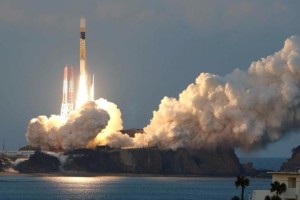 Japan has successfully launched a jointly developed space observation satellite tasked with studying mysterious black holes. The ASTRO-H satellite, developed in collaboration between the agency, NASA and other groups, is set to orbit at an altitude of about 580 kilometres (360 miles) and observe X-rays emanating mainly from black holes and galaxy clusters.
Japan has successfully launched a jointly developed space observation satellite tasked with studying mysterious black holes. The ASTRO-H satellite, developed in collaboration between the agency, NASA and other groups, is set to orbit at an altitude of about 580 kilometres (360 miles) and observe X-rays emanating mainly from black holes and galaxy clusters.
The satellite was carried out by the country’s mainstay H-IIA rocket, which soared towards the heavens from the Tanegashima Space Center in southern Japan under mostly clear late afternoon skies.
Black holes have never been directly observed, but the announcement on the first detection of gravitational waves earlier this month indirectly added to the evidence that black holes do actually exist.
Did You Know???
- A black hole is a region of spacetime exhibiting such strong gravitational effects that nothing—including particles and electromagnetic radiation such as light—can escape from inside it.
- In many ways a black hole acts like an ideal black body, as it reflects no light.
- Objects whose gravitational fields are too strong for light to escape were first considered in the 18th century by John Michell and Pierre-Simon Laplace.
- Black holes of stellar mass are expected to form when very massive stars collapse at the end of their life cycle. After a black hole has formed, it can continue to grow by absorbing mass from its surroundings.
















